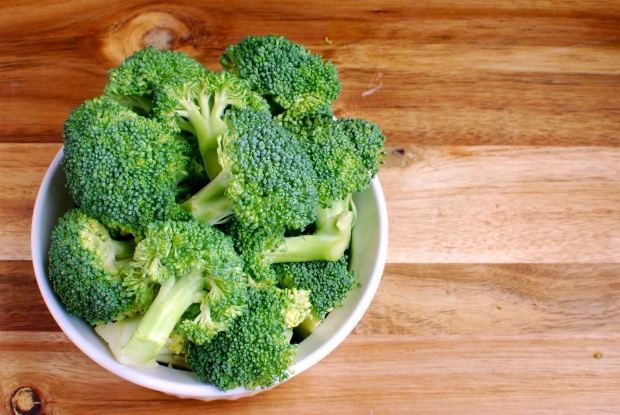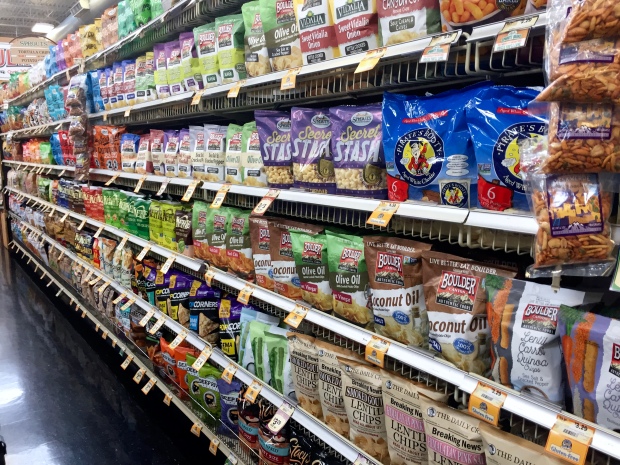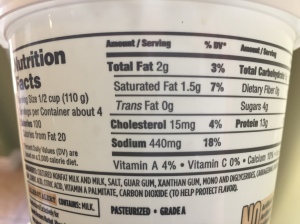This is the second part in a multiple part series on managing cravings. In the first article we talked about the two main types of cravings and how they differ. I also went over when it is best to include these cravings in your diet and when it is best to abstain from them. (You can find the article here) In this article we will go more into the causes of cravings, what is food addictions and how it differs from cravings. Also, we will go over an exercise to replace your cravings with a new healthy habit.
Cravings are an intense desire for a particular food or taste. Commonly when I discuss food cravings people bring up food addiction. Food addiction is when you have an overpowering urge to repeatedly eat something that provides a temporary relief while also having terrible consequences. For it to be classified as true addiction there also needs to be 3 of the 7 following symptoms: withdrawal, tolerance of the substance over time, eating more than you intend, trying to cut back but can’t, your time is spent pursuing, using and recovering, you miss out on activities or you keep eating these foods despite knowing the consequences. If this sounds more like what you are dealing with, I urge you to get help from mental health professional. No it doesn’t mean you are weak or don’t have will power.

Buttery salty popcorn is food many people crave and struggle not to overeat.
Occasional overeating is not food addiction. You hear people claim to be addicted to everything. A lot of the time, that is just an uncreative way of saying they enjoy something. Just because you enjoy something does not mean you are addicted to it. Food addiction is the regular compulsion to eat something knowing that it can harm us.
There are different levels to our food cravings. From “That sounds tasty” to “OMG I must eat that food” all the way to food addiction. If you would describe your cravings on a scale of 1 to 10 as 7 or higher, then you aren’t just talking about your average cravings and it is important that you get to the bottom of what is causing them. We all have food we would like to eat. Sometimes that desire is strong, but other times that desire is out of control.
Cravings can be caused by many different things. Here are few things that need to be looked at if you feel you are having unbearable cravings:
Food Variety. Does your diet include enough variety? When people diet, they commonly deprive themselves of foods they enjoy. They also deprive themselves of variety. Both of these can led to more cravings.
Are you being too restrictive? Being over restrictive in our diet can cause cravings. The reward we feel after indulging in our craving is stronger after going through a period of restricting. This is why binges are more common in overly restrictive diets. One way to handle this is to include small amounts of foods throughout your week to help you feel satisfied. (Read the 1st article on the series for more on this)
Too low of an overall food intake. Those cravings can be your body’s way to telling it needs more food. It can be important to listen to what our body is trying to tell us. Not only are diets that are too low in calories unhealthy, but also they are hard to stick to for long periods of time. This make them unsustainable.
Your macronutrients (fat, carbohydrate, protein) intake. We all have different needs for different percentage of fat, protein and carbohydrates. While your friend may do great with no cravings on a low carb diet, your cravings may go through the roof on it. Again these cravings are our body’s way of signaling us we need to change the way we eat. First, make sure you are getting enough protein. Then, alternate increasing carbs and fat until you find the point where your cravings diminish to a tolerable level. Once you have found your personal macro level, you can slowly decrease one macronutrient at a time, if fat loss is your goal.
Eating too much/too little carbs. As mentioned above, intake is a big reason for cravings. It not just too little carbs, that can cause this. Too much carbs can cause an increase in cravings. Particularly if you are consuming hyper palatable foods. Hyper palatable foods are foods high in carbs and fat or carbs and salt. When we eat these foods, instead of feeling satisfied they make us want to eat more. One reason for this when we consume these foods they stimulate the feel good chemicals in our brain, causing us to want to eat more of those foods while making us feel good.

Donuts would be considered hyper palatable foods due to their high sugar and fat content.
Not enough protein. Most people think they are consuming a lot more protein then they really are. A base amount 1.2 -1.6 g/kg body weight are ideal for optimal health for healthy adults. (That comes out to 81-109 grams for 150 Lb. person). Athletes and people undergoing intense training and exercise will need more, up to 2-2.2g/kg (For more on protein see this article here)
Enough water and fiber. Both of these can help us feel full and keep hunger and craving down between meals.

Water can help with cravings, and not enough water in a day can lead to increase in cravings.
Stress levels. High levels of stress are associated with more intense cravings. While we can’t always control what is going on in our lives we can control how we recover from it. Leisurely walks, meditation, yoga, ta chi, reading a book, warm baths, time with friends, playing with a pet and some quality time with your significant other are ways to combat stress.
Lack of sleep. Sleep deprivation can increase appetite and particular cravings for those hyper palatable foods (foods high in carbs and fat or high in carbs and salt) Try turning off the screens and going to bed earlier. If you have a hard time sleeping, you may need to look at your food intake (particularly over all calories and carbohydrates) and your stress levels. Too low a calorie intake and too low a carbohydrate intake both can affect sleep.
Too much exercise. Over exercising increases cravings. You do not need to be killing it in the gym for hours 5 days a week. Try replacing some of those sessions with low intensity activities like leisurely walks or restorative yoga (not power or hot!) or short (20 mins or less!) burst of high intensity training and see if that helps the cravings. I generally recommend 3-4 strength based workouts a week plus 1-2 10-20 min high intensity workouts and as much leisurely low intensity activity that you can fit in your day.
Weak satiety response. Satiety is the sensation of feeling full. For some there is a weak response to satiety, meaning they don’t feel full. This could be caused by leptin resistance or genetics.
Another reason we experience cravings is because we are trying to use foods to replace what is missing in our lives. We attempt to use food to replace fun, love and control. Or we use food to try to avoid feeling uncomfortable emotions, like sadness, loneliness and worry. Most of us have inadvertently been taught to reach for food as a way to deal with emotions from a young age. Maybe we were handed a bag of salty snack after a tough day at school, or given a bowl of ice cream after a fight with friends. (Reminder for parents out there, food is not love) After repeatedly reaching for food as a way to deal with emotions, a habit is created.

Why don’t we crave broccoli?
If your cravings are habit based (and you know your nutritional intake is on point) then you can deal with from a mental perspective. Below I outlined a little exercise to help you replace those cravings with a healthier habit. (Again, this is for habit based cravings and not cravings stemming from nutritional inadequacy)
Four steps to mentally handling our cravings.
1)Realizing what your cravings are. Sounds simple right? You may know what your big cravings are, but there may be smaller ones you are not aware of. I would give it at least a week. Do nothing but just pay attention to what your cravings are. Ladies, better yet would be to look at your cravings over your entire menstrual cycle. The normal fluctuations in your hormones do effect what you crave and intensity of them.
What do you crave? Is it chocolate? Salty crunchy tortilla chips? Nut butters? Wine or alcohol? This is the 1st step, just knowing WHAT you routinely crave. You don’t need to do anything else right now. Just notice and be aware. If you have a journal, write them down. Do not judge your cravings, just accept them. Pay special attention to the type of food you routinely crave; is it salty starchy foods (i.e. chips, pretzels) or high starch high fat foods (like desserts, candy, ice cream) or alcohol?
2.) Now that you know what your cravings are, when do you experience them? Pay attention to not only what time of day, but what is going on in your life at that moment. Are you sitting in front of the TV at night? Coming home after a LONG day at the office? Maybe you are emotionally upset? Are you tired or stressed? Is it when you are celebrating? Or when you are out with friends?
3.) Identify what it is you really want when you reach for these foods. What rewards are you really looking for when these cravings hit? Maybe it has been “one of those days” and what you are really looking for is just to relax. Or you want to numb out from that emotional or taxing day. Or you are looking to have fun. Becoming aware of what the real reward here is key! Do not rush through this step.
Now notice, after you had that pint of ice cream or bag of chips, did you get the reward you were searching for? Do you actually feel more relaxed? Did you really forget about the bad news? Or do you feel uncomfortable or angry at yourself? Most of the time, we do not end up getting the original reward we were searching for.
4.) After spending some time doing all this noticing and paying attention, it’s time to do the work. We now want to replace that food craving with a new craving. I won’t lie, this is the hardest step. Pick your new “craving”. Some ideas are a bath, a walk, meditation, light exercise, reading, cuddle time with a loved one or playing with your pet. Rest and relaxation type exercises are really good here, since majority of craving are tied to high stress levels. This will be the hard part. For 2 weeks, every time the craving hits, notice it. Be mindful of it, but instead of eating or drinking, do your new craving. Eventually that will become your new routine. The time it takes to install this new craving will be different for everyone. It will partly depend on how long you have been using these foods to try and meet your needs. We have inadvertently trained ourselves to believe we need the food or drink we crave in order to reach our goal (of numbing out, relaxing, etc.). We don’t, however, it’s just a habit we created. And we can create a new one.
There is a direct correlation between our moods and our cravings. Commonly we try to manage our moods with foods. If we can change the habit of eating the food with something else, we create a new healthy habit.
Cravings run the gamut from “Man, that is something that sounds delicious” to true food addiction. It is important you differentiate between the two before trying to manage them. Cravings can be caused by a handful of things. Before you try to change them or white knuckle your way through them, you need to address a few things like your food intake, stress levels, recovery and exercise amounts. With some work and mindset, you can deal with habit based cravings. Our cravings do not need to run our lives.
References
Dalton, M. H. (2015, Sept). Weak Satiety Responsiveness Is a Reliable Trait Associated with Hedonic Risk Factors for Overeating among Women. Nutrients, 7(9), 7421-7436.
Hill, A. (2007, May). The psychology of food craving. Proc Nutr Soc, 66(2), 277-85.
Kenny, P. (2011, Feb). Reward Mechanisms in Obesity: the new insights and future direction. Neuron, 69(4), 664-79.












